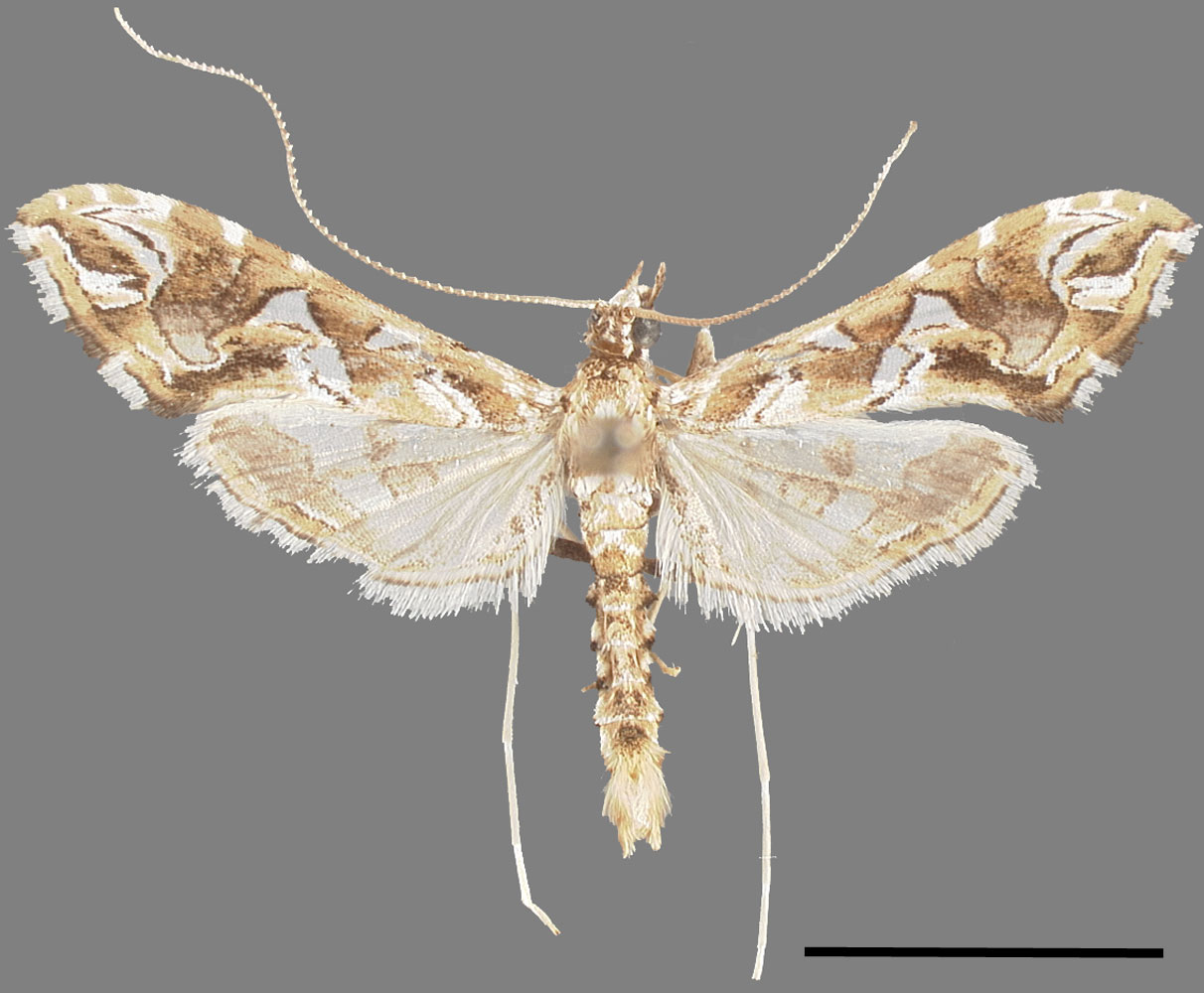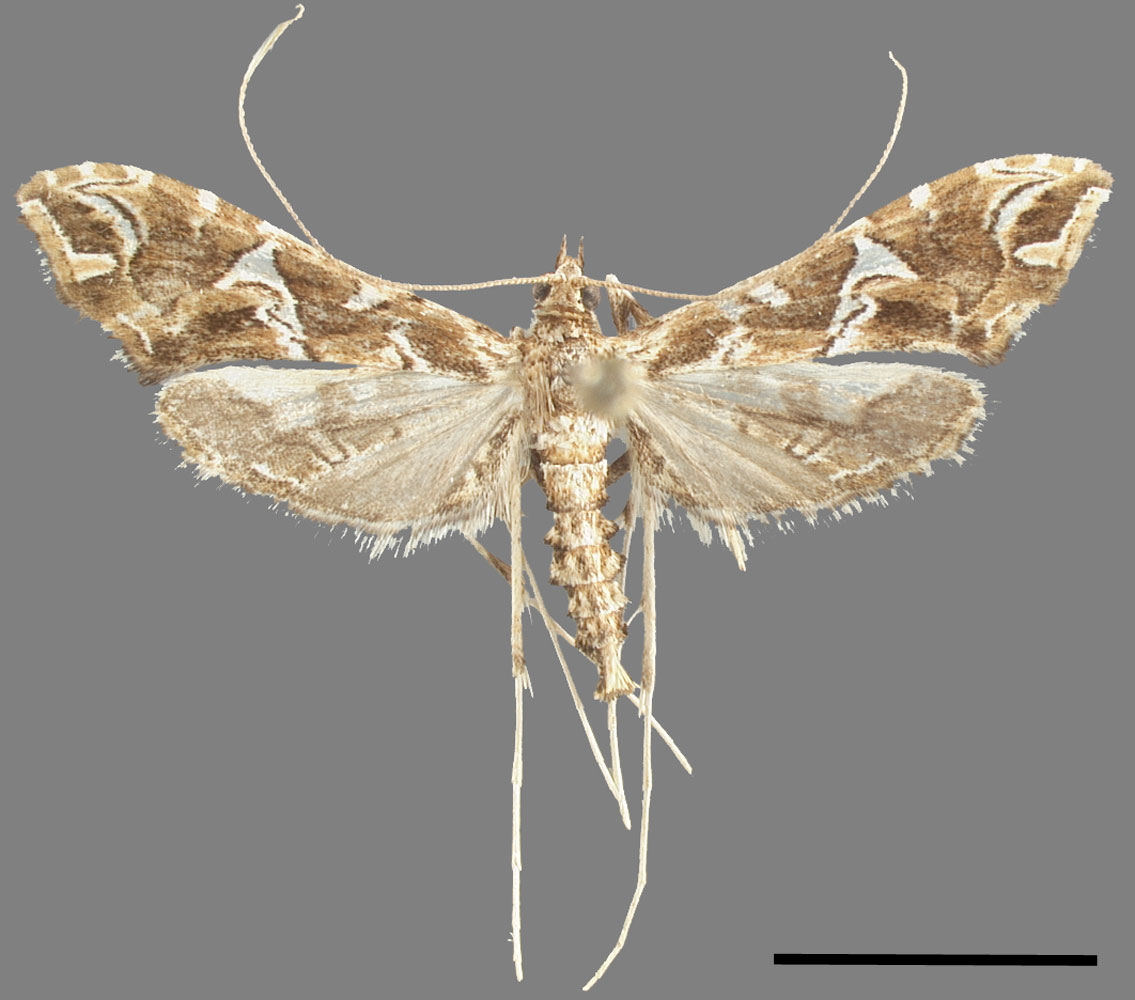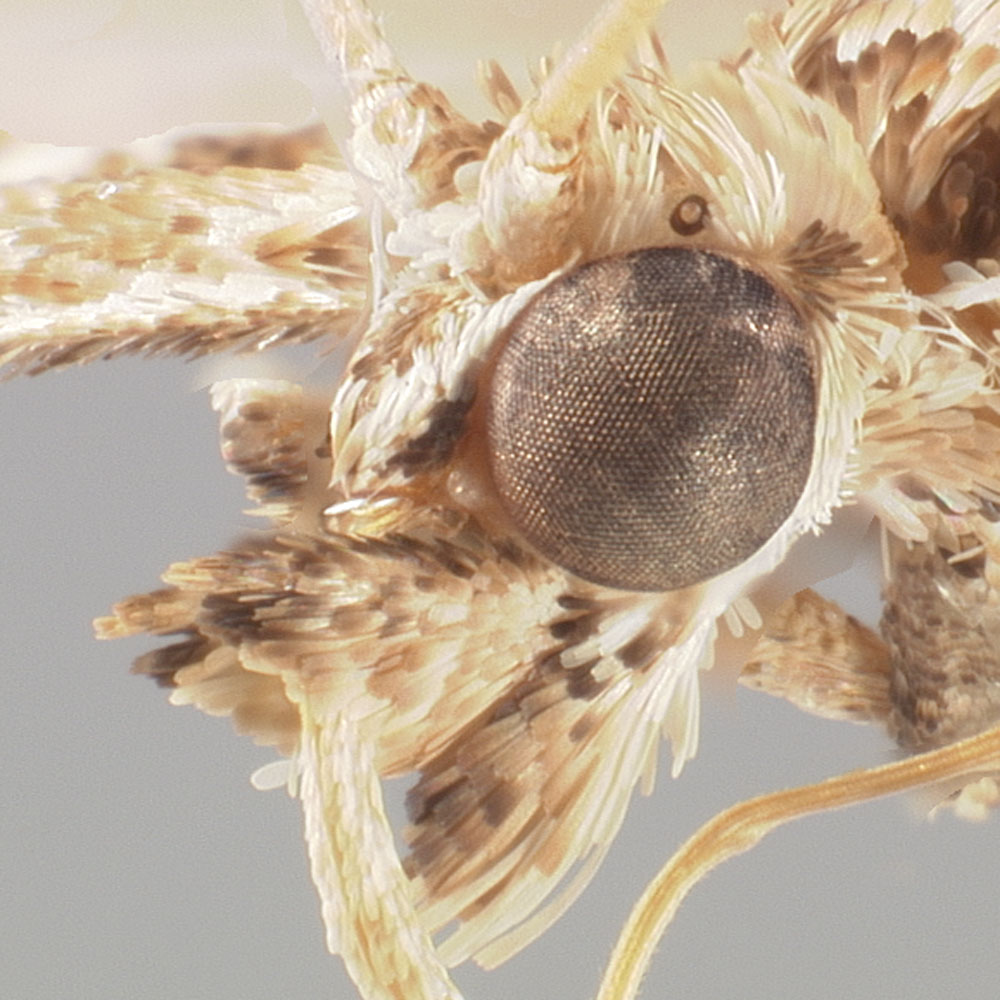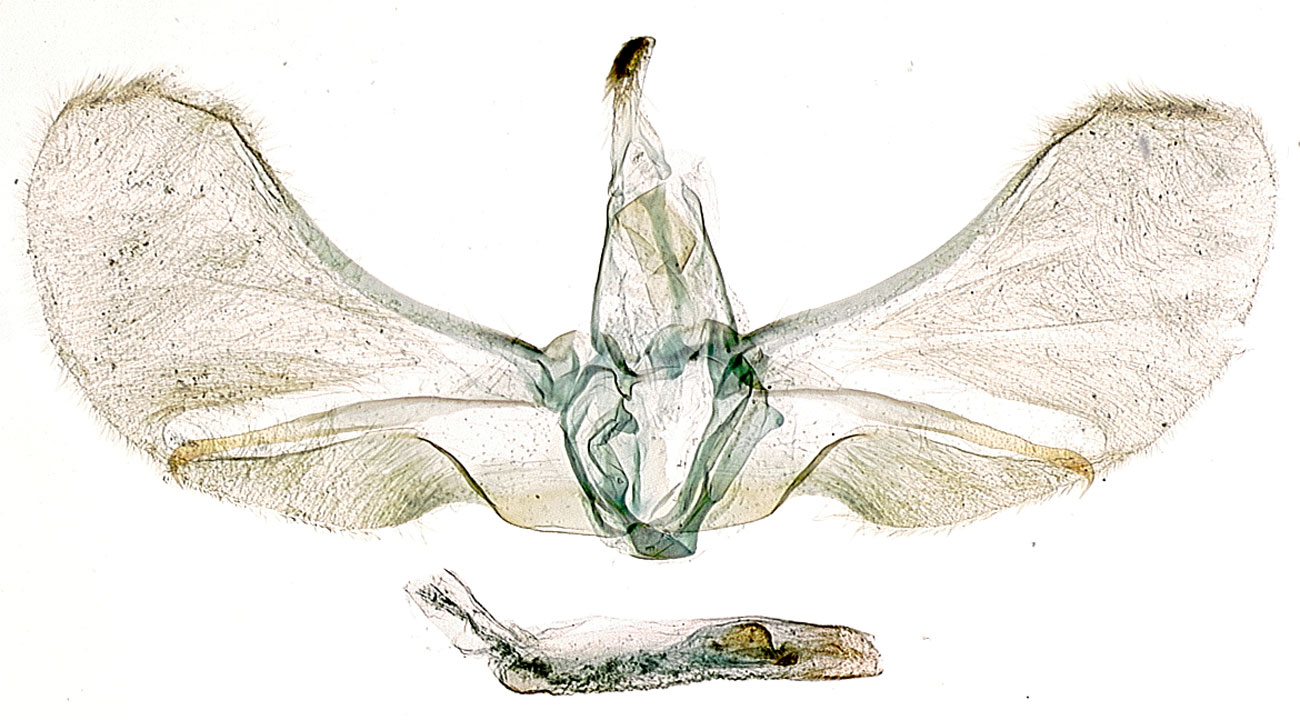Lineodes vulnifica
|
Lineodes vulnifica male habitus. Scale = 5 mm. |
|
Lineodes vulnifica female habitus. Scale = 5 mm. |
|
Lineodes vulnifica head. |
|
Lineodes vulnifica male genitalia. |
|
Lineodes vulnifica female genitalia. |
Name
Lineodes vulnifica Dyar, 1913
Common name: none.
Original combination: Lineodes vulnifica Dyar, 1913
Synonyms: none.
Alternative combinations: none.
Classification: Pyraloidea, Crambidae, Spilomelinae, Leucinodes group
Adult recognition
Forewing length: 7.7 - 8.5 mm, narrow. The wings are strikingly patterned with contrasting and sharply defined white and brown areas. The white medial area is nearly bisected into an anterior triangle and a posterior oval. The costaCosta:
(1) The anterior margin of the wing.
(2) In the male genitalia, the dorsal margin of the valva.
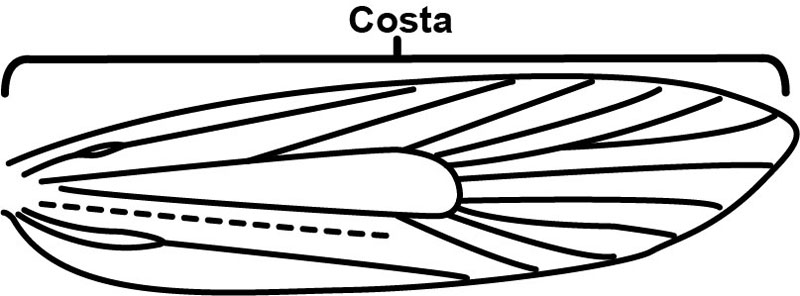 has white spots on brown. Likewise, the hind wings have brown discal spots and terminal band that are distinct from the white ground color. In males, the valvae are broad, and the fibulaFibula:
has white spots on brown. Likewise, the hind wings have brown discal spots and terminal band that are distinct from the white ground color. In males, the valvae are broad, and the fibulaFibula:
Any projection on the face of the valva (not including the saccular process, if any).
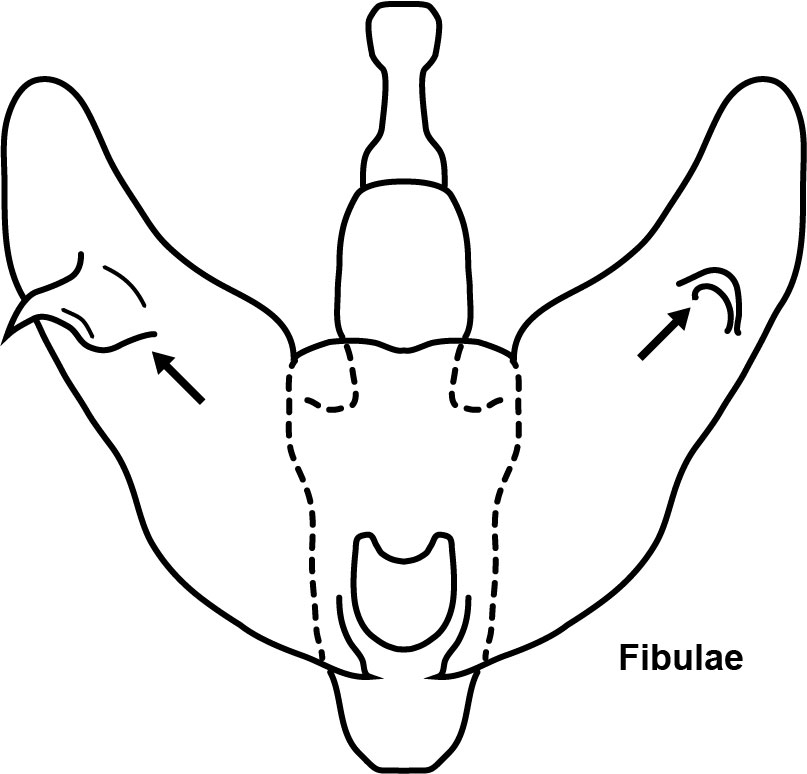 obliquely slants to the sacculusSacculus:
obliquely slants to the sacculusSacculus:
The ventro-basal area of the valva.
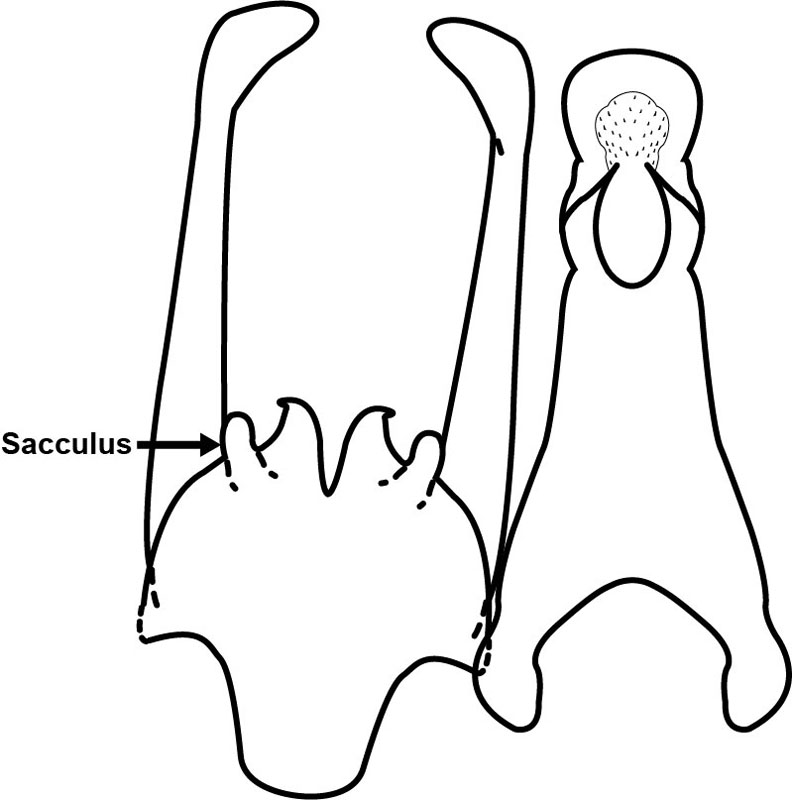 and terminates in a sharp hook. The female genitalia are not different from those of other Lineodes species, consisting of a narrow ductus bursaeDuctus bursae:
and terminates in a sharp hook. The female genitalia are not different from those of other Lineodes species, consisting of a narrow ductus bursaeDuctus bursae:
The usually narrow duct between the ostium and antrum and the corpus bursae.
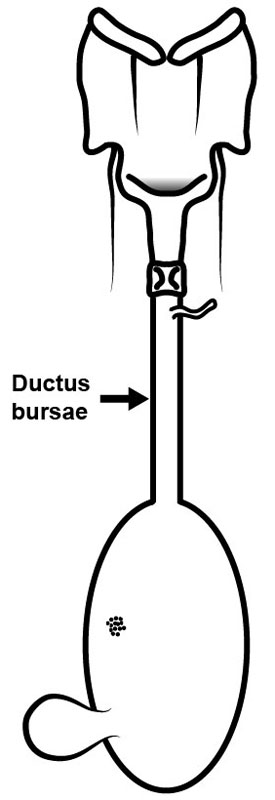 about twice as long as the globular corpus bursaeCorpus bursae:
about twice as long as the globular corpus bursaeCorpus bursae:
The enlarged, bulbous anterior end of the female genitalia.
 .
.
Immature stages
Not described.
Similar species
Lineodes triangulalis has much smaller areas of white on the forewings, and they are dusted with brown scales. The male fibulaFibula:
Any projection on the face of the valva (not including the saccular process, if any).
 of L. triangulalis is not hooked, and the female ductus bursaeDuctus bursae:
of L. triangulalis is not hooked, and the female ductus bursaeDuctus bursae:
The usually narrow duct between the ostium and antrum and the corpus bursae.
 is short.
is short.
Behavior
Recorded to feed on the fruit ("fructificacion") of pepper (C. annuum) in Honduras (USNM specimen).
Distribution
Northern South America (Venezuela) and Central America (Costa Rica, Honduras, Mexico, Panama) north to southern Texas; also Caribbean (St. Vincent).
Hosts
Capsicum annuum L. (pepper)
“Capsicum baccatum” (Texas)
Comments
This species has been confused with L. triangulalis in collections. They are sympatric in southern Texas. It was recorded on pepper in Texas as early as 1943, having been previously known only in Mexico.
Literature
Annand 1946Annand 1946:
Annand PN. 1946. Report of the Chief of the Bureau of Entomology and Plant Quarantine, Agricultural Research Administration 1945: 1-63.

